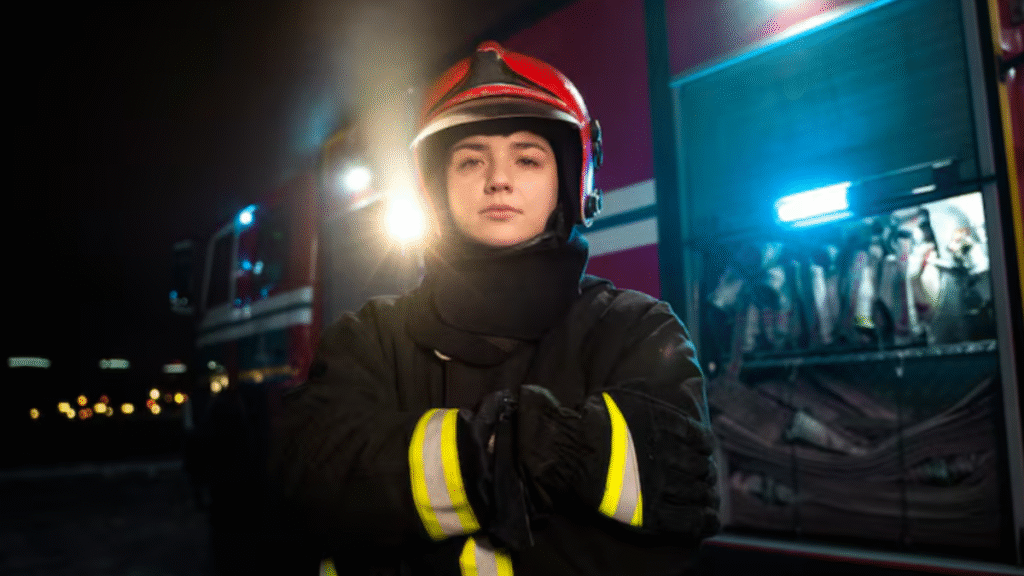Emergencies can strike at any moment, and in those crucial seconds, clear leadership can save lives. That’s where fire wardens come in. A fire warden’s role is one of responsibility, preparation, and action — ensuring that everyone in a workplace or facility remains safe before, during, and after an emergency.
Whether you work in a corporate office, warehouse, school, or retail space, understanding what it takes to become an effective fire warden is essential. This guide covers the key duties, training, and procedures involved, helping individuals and organisations establish a proactive fire safety culture that meets both legal and practical standards.
An effective fire warden doesn’t just respond to emergencies; they help prevent them by maintaining safety systems, inspecting potential hazards, and promoting awareness. One of their most critical responsibilities is managing an evacuation plan — the foundation of every successful emergency response.
Understanding the Role of a Fire Warden
A fire warden is trained to take charge during emergencies, particularly fires, to ensure that all occupants are safely evacuated. However, their work begins long before any alarm sounds. Their duties involve constant vigilance, inspection, and communication to ensure the building remains compliant and prepared.
Fire wardens are responsible for:
- Identifying and reporting fire hazards in the workplace.
- Conducting or assisting with fire drills and safety briefings.
- Ensuring exits, stairwells, and escape routes are clear at all times.
- Checking that firefighting equipment, such as extinguishers and alarms, is operational.
- Leading occupants during an evacuation and guiding them to the assembly point.
- Performing headcounts and reporting missing persons to emergency responders.
These duties require calm decision-making, situational awareness, and strong communication skills.
Training and Certification
Becoming a fire warden isn’t just about volunteering — it involves proper training and certification. Accredited courses teach participants how to recognise fire risks, use firefighting equipment, and manage evacuations effectively.
Training typically includes:
- Fire prevention awareness:Understanding fire causes, classifications, and prevention strategies.
- Evacuation procedures:Learning how to coordinate safe and efficient evacuations.
- Emergency communication:Using clear instructions and maintaining calm under pressure.
- Equipment use:Knowing how to handle extinguishers and alarms properly.
- Legal responsibilities:Understanding the compliance standards under workplace safety laws.
Refresher courses should be completed every one to two years to ensure knowledge stays current. A well-trained fire warden doesn’t just respond to incidents—they lead confidently, reducing confusion and ensuring safety for all.
Pre-Emergency Responsibilities
Preparedness is the core of fire safety. Before any incident occurs, fire wardens should carry out several key tasks to ensure the environment remains safe and compliant:
- Conduct regular inspectionsof exit routes, doors, and fire equipment.
- Check that evacuation signageis visible and clear.
- Ensure staff are familiarwith alarm sounds and emergency procedures.
- Monitor potential hazardssuch as overloaded sockets or blocked hallways.
- Update emergency contact listsand floor plans when layout changes occur.
Preventative measures like these significantly reduce the risk of fire-related injuries or property damage.
During an Emergency
When a fire breaks out, a fire warden must act fast, clearly, and confidently. Their responsibilities include:
- Activating the alarmif it hasn’t already been triggered.
- Directing occupantsto the nearest exits in a calm and orderly manner.
- Avoiding panic:Using firm but reassuring communication helps people follow instructions.
- Assisting those with disabilities or mobility challenges.
- Closing doorsto contain smoke and fire without locking them.
- Performing a final sweepof designated areas to ensure no one is left behind.
- Reporting to the chief wardenonce all areas are cleared.
A fire warden must stay calm under pressure, as others will look to them for direction. Clarity and composure are essential for maintaining control.
Post-Emergency Procedures
After everyone reaches the assembly area, the fire warden’s responsibilities continue. They must:
- Conduct a roll callusing the staff attendance list.
- Identify missing personsand report them to emergency responders.
- Prevent re-entry until clearance is given by authorities.
- Document the incident or drill for management review.
Post-incident reporting helps improve safety protocols, ensuring lessons learned are implemented for future preparedness.
The Importance of Evacuation Planning
An evacuation plan is more than a diagram—it’s a step-by-step strategy that determines how people move from danger to safety. A strong plan identifies exit routes, assembly areas, and communication procedures.
Fire wardens play a crucial role in developing, maintaining, and testing these plans. They ensure signage is visible, routes are accessible, and that all employees know their responsibilities during an emergency.
A properly maintained evacuation plan saves time and lives. It must be updated whenever building layouts change or when new staff members join. Regular drills help reinforce the plan and reveal potential weaknesses that can be improved before a real emergency occurs.
Communication and Leadership
A successful evacuation depends on communication and leadership. Fire wardens must project authority without creating panic. They should give clear, simple instructions—pointing out safe exits, discouraging the use of elevators, and ensuring calm movement toward assembly areas.
Strong communication also extends beyond emergencies. Regularly discussing safety updates, conducting quick training sessions, and encouraging staff participation in drills builds confidence and awareness across the organisation.
In workplaces with multiple floors or departments, coordination between wardens is essential. Having a chief and deputy warden system ensures accountability and smooth execution during both drills and real incidents.
The Role of the Fire Warden in Safety Culture
Being a fire warden is not just a task—it’s a leadership role within the organisation’s safety framework. Fire wardens set the tone for awareness and responsibility. When employees see consistent inspections, updated signage, and proactive training, they develop trust and take safety more seriously.
Encouraging a safety-first culture requires regular engagement. Wardens should communicate updates through meetings, posters, and internal newsletters. The more visible fire safety becomes in daily operations, the more ingrained it becomes in the workplace culture.
An effective fire warden system also relies on teamwork. Everyone must know who their area warden is and understand basic emergency procedures.
Common Mistakes to Avoid
Even the most prepared workplaces can face issues if safety protocols aren’t followed correctly. Some common mistakes include:
- Failing to update evacuation maps after renovations.
- Not replacing expired fire extinguishers or batteries in alarms.
- Allowing clutter or storage in corridors and stairwells.
- Neglecting regular fire drills.
- Relying on untrained individuals to coordinate evacuations.
Avoiding these mistakes ensures faster, safer, and more effective responses.
Conclusion
Becoming a fire warden is about more than ticking a compliance box—it’s about leadership, awareness, and responsibility. Fire wardens are the key link between prevention and action, ensuring every employee knows what to do when seconds matter most.
With structured training, a well-maintained evacuation plan, and the commitment of professionals like those from First 5 Minutes, organisations can build a safer workplace where preparedness becomes second nature.
A good fire warden doesn’t just react—they anticipate, educate, and lead by example, ensuring that when an emergency happens, everyone gets home safely.







